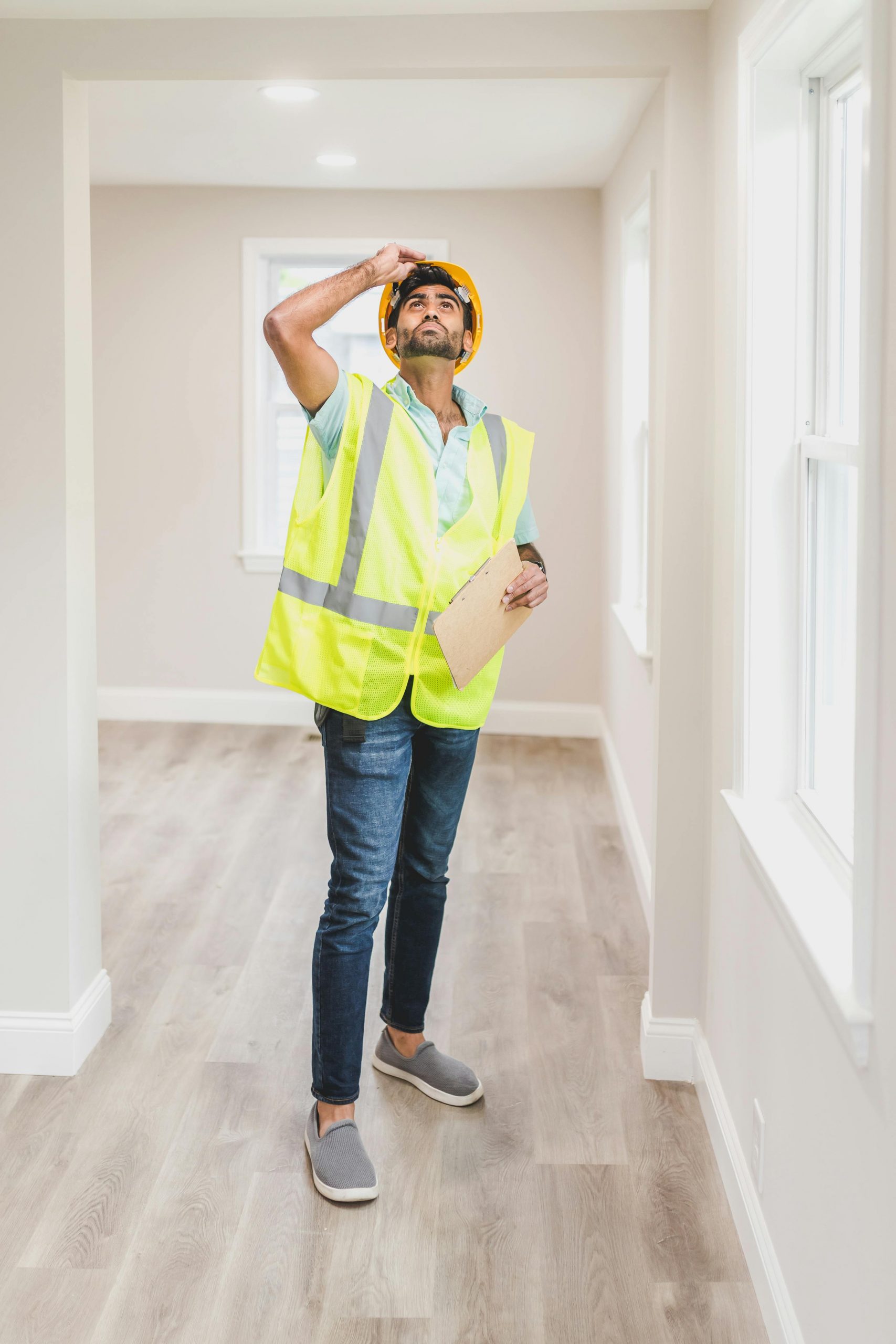
- Start home inspections with a comprehensive checklist to ensure no area is overlooked during the evaluation.
- Utilize essential tools like flashlights and moisture meters for a thorough and effective home assessment.
- Identify common issues such as interior cracks and hot electrical outlets to maintain home safety.
- Seek professional help for complex problems to ensure issues are resolved safely and efficiently, safeguarding your investment.
The idea of a malfunctioning or unsafe home can be a stressful thought. A well-conducted home inspection safeguards your investment and affords peace of mind. This comprehensive post will guide you through the art of home inspections. It will also answer why they’re critical, what to focus on, and how to go about them effectively.
The Basics of Home Inspections
Home inspections are detailed examinations of areas that are accessible and easily marked by the naked eye. Experts usually perform these and do not cause any significant disruptions. Aside from detecting problems, inspectors also check the compliance of one’s home to regulations and standards.
The frequency of home inspections can vary depending on certain factors, such as the property’s age. An inspection every three to five years may be sufficient for newer homes. However, older homes—usually 20 years or older—should be inspected yearly or annually.
Seasonal checks can often unearth problems typical to each time of the year, such as air conditioning concerns in summer or the health of heating systems in winter. These maintenance are usually due to temperature concerns, which is the main factor for problems that may arise.
Areas to Focus On
Every house has a different function, affecting the frequency of their inspection and maintenance. Here are some of the common parts that need delicate care.
Key Systems and Components
Plumbing
Inspect for leaks under sinks, around toilets, and in the water heater area. Water pressure should be strong and consistent throughout the home. Aside from inspectors, you should be prepared to call the attention of reliable plumbing services. Prevent unexplained increases in water bills, which can sometimes be an early warning of an undetected plumbing problem.
Electrical
Take a comprehensive look at the electrical system, starting with the breaker box. Look for signs of wear or damage on wiring, and ensure all power outlets are functioning and safe. Electrical fires are a more common safety concern than one might imagine and are often preventable through regular checks.
Interior Spaces

Walls and Ceilings
The integrity of walls and ceilings is a structural concern that requires frequent maintenance. Look for any water damage signs indicating an active roof leak or plumbing issue. Similarly, wall cracks, especially those significant or accompanied by internal or external movement, demand closer inspection.
Windows and Doors
Check for drafts around windows and doors, as they signal efficiency problems that can escalate energy bills. Additionally, ensure these elements open and close correctly, latching and sealing as they should for safety and security reasons.
Exterior Spaces
Roof
Your roof is your first line of defense against the elements. Inspect for missing or damaged shingles and signs of deterioration on metal or flat roofs. Don’t forget to assess the condition of the flashing around vents, chimneys, and skylights.
Foundation
A stable foundation is paramount for a safe and secure home. Look for any visible cracks, particularly those that are expanding, and signs of water intrusion in crawl spaces or basements. Foundation issues can be extremely costly and require immediate attention.
The Benefits of Regular Home Inspections
Preventing Major Issues and Costly Repairs
Identifying problems can save homeowners a significant amount of money. For example, a minor leak can be a simple fix, but if left unchecked, it can lead to mold, rot, and structural damage.
Enhancing Home Safety and Comfort
A safe and comfortable home is directly linked to regular upkeep. Ensuring your home is free from safety hazards such as electrical problems or malfunctioning appliances is crucial for peace of mind.
Tips for Conducting Your Inspections
When conducting your home inspections, always start with a checklist to ensure you cover all critical areas and components of your home. This systematic approach prevents overlooking minor issues that could evolve into bigger problems.
Using the right tools, such as a flashlight for dark areas, a ladder for roof inspections, and a moisture meter for detecting hidden leaks, is essential during the inspection. These tools can help you perform a more thorough and effective inspection.
Learn to recognize common issues, such as:
- Interior cracks increase in size or are accompanied by stress on walls and ceilings.
- Excessive water pooling after rain.
- Electrical outlets or switches that are hot to the touch.
Lastly, don’t hesitate to call a professional if you discover issues beyond your expertise. Some problems, especially those related to electrical systems or structural integrity, require the knowledge and skills of a certified expert to resolve safely and efficiently.
Regular home inspections safeguard your investment, prevent costly repairs, enhance safety, and promote peace of mind. Remember, being proactive is always more cost-effective than reacting to major issues that regular maintenance could have prevented. Consider this an investment to make your home a place of comfort for you and your loved ones.
